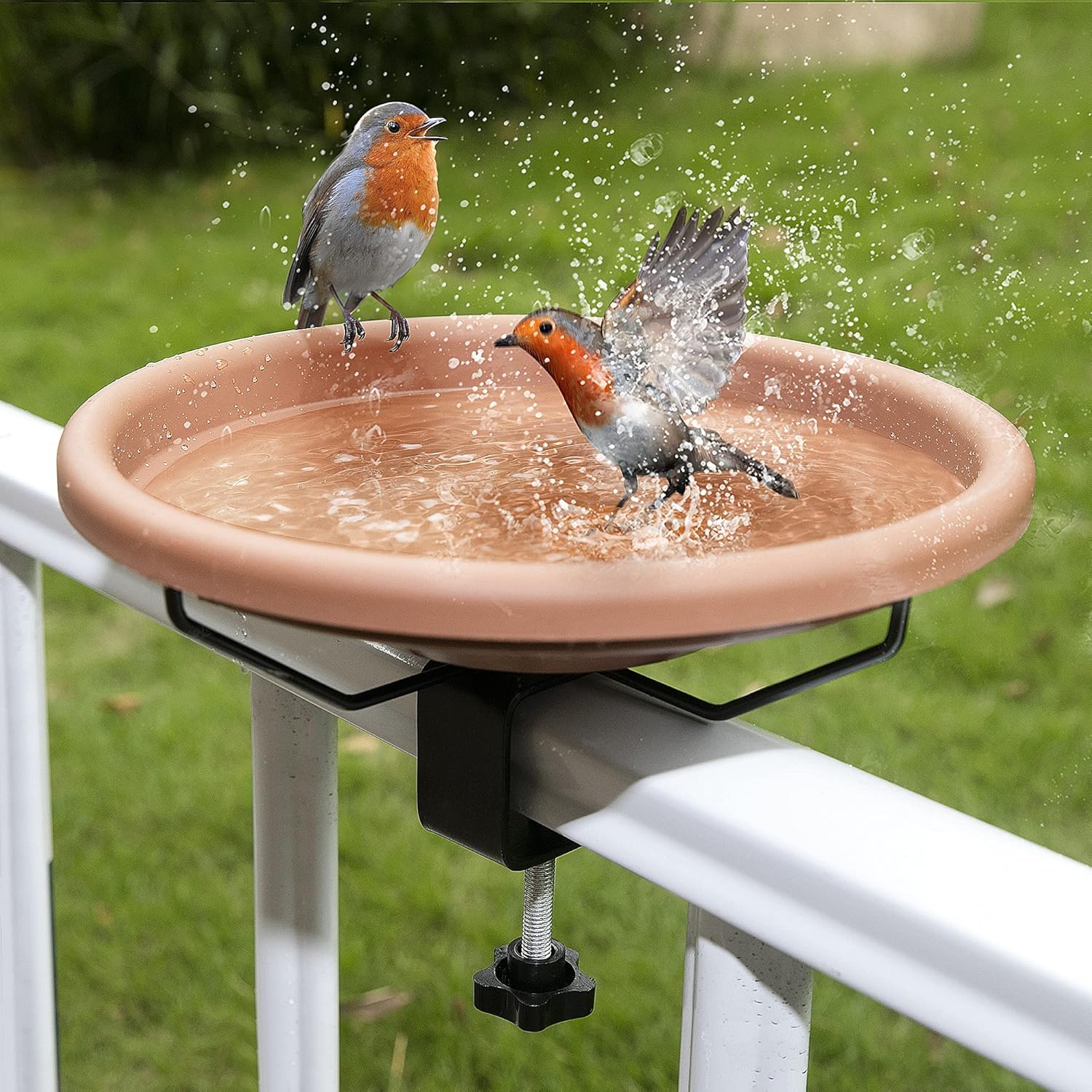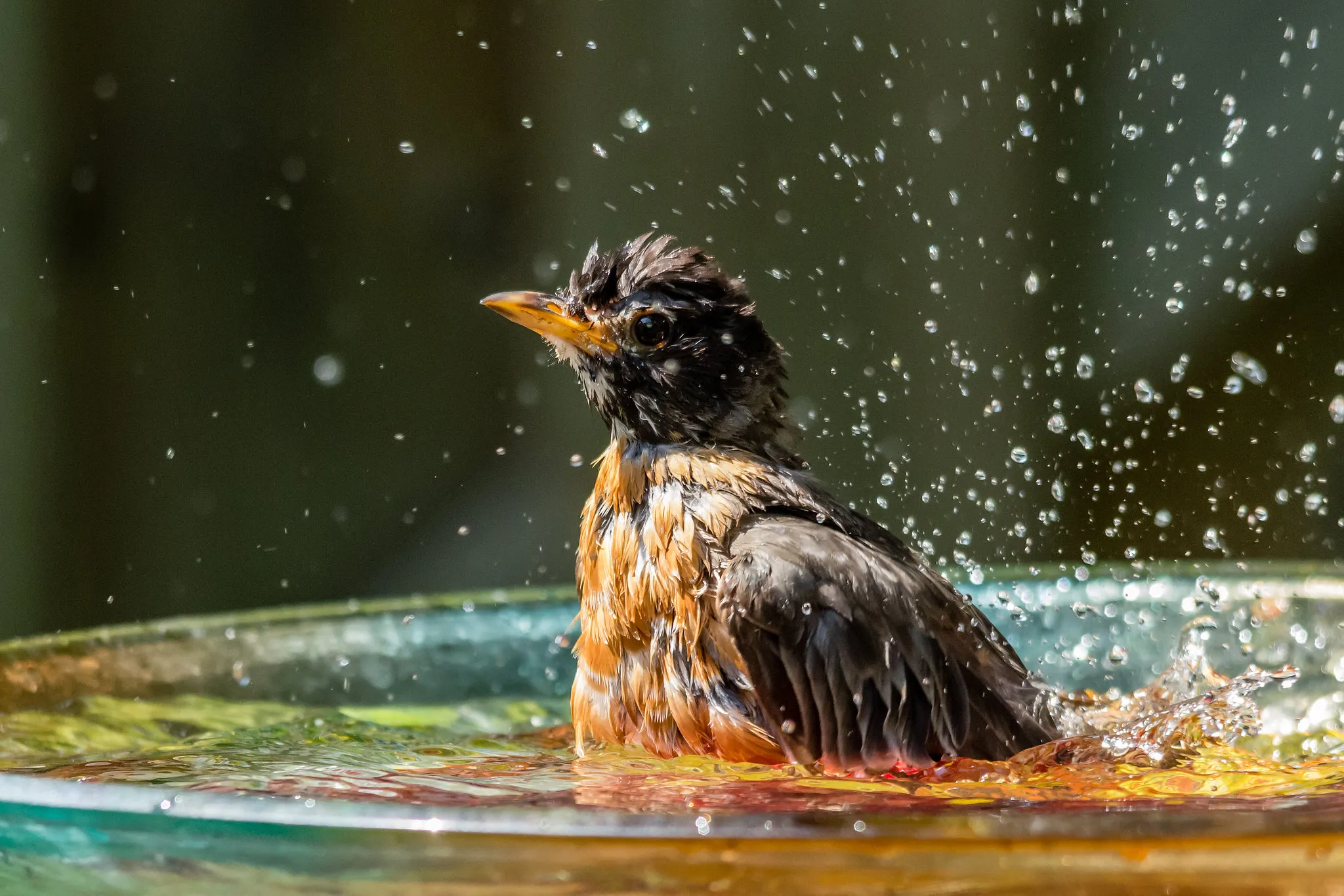Birds are delightful and intelligent pets that thrive in environments where their natural behaviors are encouraged. One such essential behavior is bathing. Bathing plays a critical role in a bird’s physical and mental health. Whether you’re a new bird parent or a seasoned avian enthusiast, understanding how and why to bathe your bird properly is key to raising a happy, healthy pet.
In this guide, we’ll explore the importance of bird bathing, the different bathing methods, tips for safe and effective baths, and how often you should bathe your feathered friend.
🧼 Why Is Bird Bathing Important?
Bathing is not just about cleanliness—it’s about your bird’s overall well-being.
✅ Benefits of Bathing for Birds
| Benefit | Explanation |
|---|---|
| Removes Dust and Dander | Birds produce fine dust which needs to be regularly washed off. |
| Keeps Feathers Healthy | Bathing helps preen feathers and keeps them in top condition. |
| Moisturizes Skin | Prevents dry, flaky skin, especially in indoor environments. |
| Stimulates Natural Behaviors | Bathing is instinctual and offers enrichment for mental stimulation. |
| Reduces Itching and Irritation | Removes irritants like dirt or mites from the plumage. |
Without regular bathing, your bird may develop feather plucking habits, dry skin, or even infections.
🛁 How Birds Naturally Bathe in the Wild
In the wild, birds bathe in puddles, streams, dew-laden leaves, or even rain. Some birds enjoy dust bathing, while others prefer light misting.
As a pet owner, your goal is to mimic this natural behavior in a safe indoor setting.
🚿 Different Methods of Bathing Your Bird
Not all birds enjoy the same type of bath. It’s important to observe your bird’s preferences and provide options.
1. Shallow Dish Baths
A low, wide container (ceramic or plastic) filled with lukewarm water is the most common method.
- Water should be no deeper than your bird’s legs.
- Place the dish in their cage or play area during the day.
- Some birds may hop in and start splashing naturally.
2. Misting Spray Bottles
Fine-mist spray bottles can mimic gentle rain.
- Use clean, lukewarm water only.
- Spray above the bird so mist falls like rain.
- Avoid spraying directly into the face, eyes, or nostrils.
3. Shower Time (With Supervision)
Many parrots and larger birds enjoy showers.
- Use a gentle mist or low-pressure shower head.
- Allow them to perch nearby where water splashes lightly on them.
- Some birds like to be part of your own shower (on a nearby perch).
4. Wet Leaf Bathing (Natural Method)
Place wet greens or herbs like spinach or kale in the cage.
- Birds may rub against the leaves to mimic wild bathing.
- Adds fun and enrichment to their routine.
🔒 Safety Tips for Bathing Your Bird
To ensure a safe and enjoyable experience, follow these essential tips:
| Tip | Why It’s Important |
|---|---|
| Use lukewarm water only | Cold water can cause shock; hot water can burn. |
| Avoid soaps or shampoos | Even bird-safe products can strip natural oils from feathers. |
| Don’t force your bird | Introduce bathing slowly; let them explore at their own pace. |
| Watch for drafts | Keep your bird away from cold air while drying to prevent chills. |
| Never leave them unattended | Supervise all baths to avoid accidents or drowning. |
| Bathe during the warmest part of day | Helps ensure they dry completely before nighttime. |
🗓️ How Often Should You Bathe Your Bird?

The ideal bathing frequency varies based on species, environment, and individual preferences.
| Bird Type | Suggested Frequency |
|---|---|
| Parakeets & Budgies | 2–3 times per week |
| Cockatiels & Lovebirds | Every other day |
| Parrots (African Grey, Macaw, etc.) | 1–2 times per week |
| Canaries & Finches | Daily or every other day |
🕒 Tip: Always bathe your bird earlier in the day so they dry before bedtime.
🧴 Should You Use Special Bird Bath Products?
Generally, plain, clean water is best.
- Avoid pet shampoos or detergents unless prescribed by an avian vet.
- If your vet recommends treatment for mites or skin issues, follow their exact directions.
🪶 Drying Your Bird After a Bath
After bathing:
- Let your bird air dry naturally in a warm room.
- Do not use a blow dryer, as it may burn the skin or release harmful fumes from Teflon-coated coils.
Some birds like to preen and sit quietly after a bath. This is a natural and healthy behavior.
❓ Troubleshooting Bathing Challenges
If your bird refuses to bathe, try:
- Using different bathing methods (dish, mist, wet greens)
- Bathing in a different location or time of day
- Taking a shower together (on a perch, not handheld)
- Offering positive reinforcement like praise or treats afterward
🌿 Bonus Tip: Bathing Can Improve Air Quality Too
Birds create dander, which can affect indoor air quality. Regular bathing reduces airborne particles and helps both you and your bird breathe better, especially in small living spaces.
📌 Final Thoughts
Bird bathing is a simple yet powerful way to improve your pet’s health, happiness, and hygiene. By offering a variety of safe and enjoyable bathing options, you help your bird stay clean, stimulated, and bonded with you.
Let your bird choose their preferred bathing method, keep it consistent, and watch how it boosts their mood and well-being.
